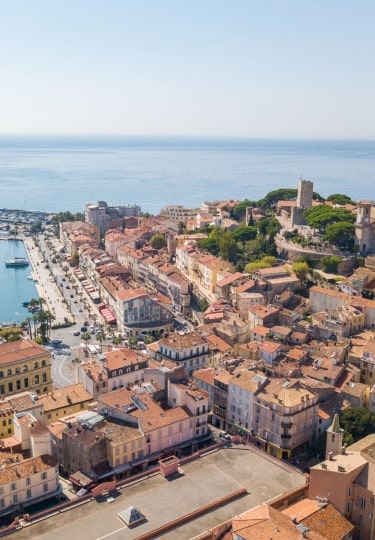The best time to visit the south of France depends on what you’re looking for.
The south of France enjoys a typically Mediterranean climate, with mild, often rainy winters and hot, dry summers. May, June, and September bring warm, sunny days, with the sea perfect for swimming by September. July and August, on the other hand, are the hottest months, which is the perfect time to head to the beach.
France’s Mediterranean coast is developed, so there is a lively cultural scene here year-round, from the February carnival in Nice to the famous Jazz à Juan festival in July. The south of France is defined by nature, too, whether you come for the yellow mimosa blossom in winter or the magnificent lavender fields in July.
Visiting the South of France By Season
Summer
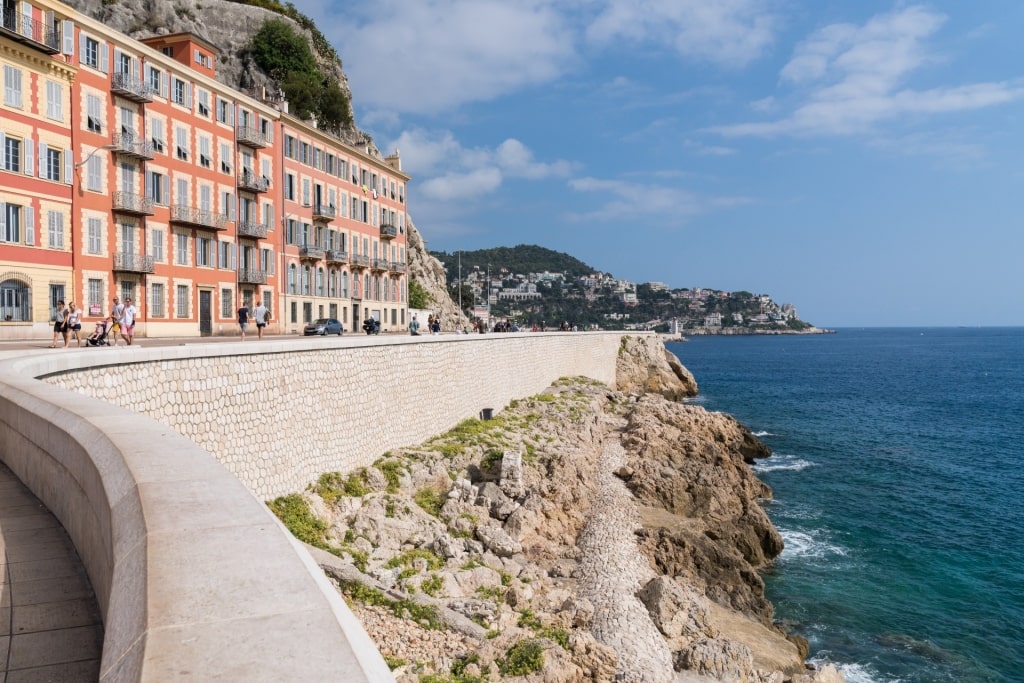
Promenade des Anglais, Nice
June, July, and August are peak season months in the south of France—August in particular, when most of France appears to head for the coast. July is the hottest month of the year, with average highs of 77.5°F (25.2°C). In August, the sea temperature is a balmy 75°F (24°C) on the Côte d’Azur and just a degree or so cooler around Marseille.
June, July, and August are also the driest months, with rainfall in July just 0.4 inches (10mm). If rain does fall, it often comes in the form of thunderstorms to clear the air.
Fall
The weather changes in fall as the heat of summer fades. This is still an excellent time to travel. The weather is more pleasant for visiting cultural attractions in comfort.
Expect average highs of 69.6°F (20.9° C) in September, dropping to 53.1°F (11.7°C) in November. Rainfall increases slightly; in September, you can expect 3 inches (79mm) of rain and rainfall on an average of five days.
Winter
Winters in the south of France are typically mild and often rainy. The weather around Marseille and the Rhône delta in particular is influenced by the mistral and tramontane winds, which are cold and often very strong, resulting in slightly cooler temperatures than those of the French Riviera to the east.
Temperatures rarely drop below freezing; in Nice, the average temperature in January is 49°F (9.5°C).
Winter is also famous in the south of France as the mimosa season. Trees are brilliant with yellow pom-pom flowers and market stalls are bright with color. You can drive the Route du Mimosa all along the coast, from Bormes-les-Mimosas to Grasse, near Cannes, to see the fragrant yellow blooms at their finest.
Spring
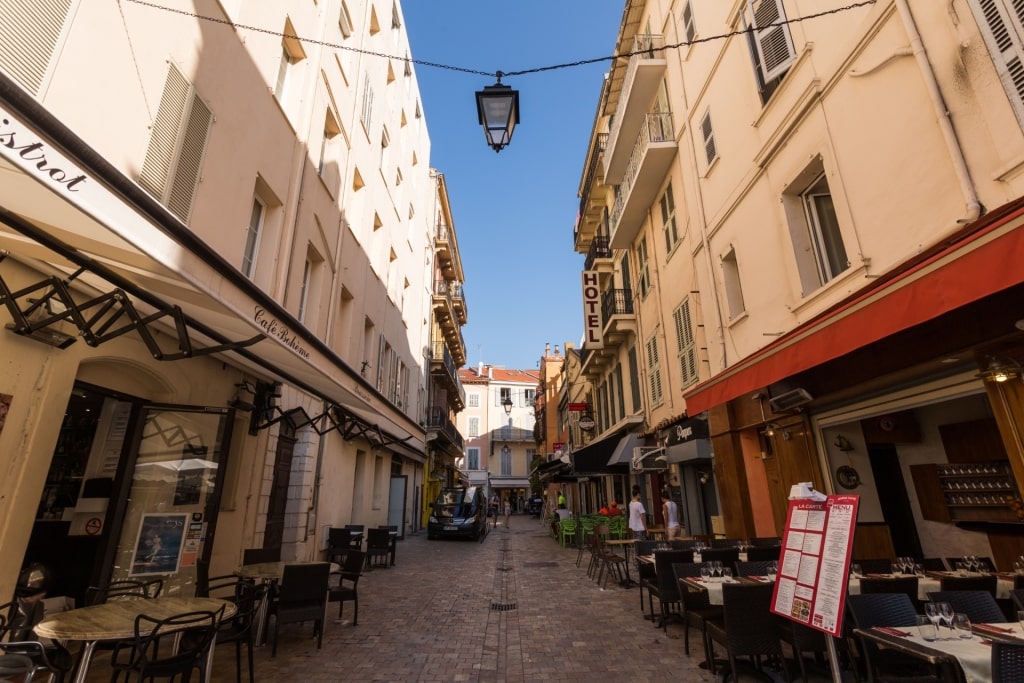
Allées de la Liberté, Cannes
Spring is a wonderful time to visit the south of France. The meadows are brilliant with scarlet poppies in May, and the fields are green and the air clear. By May, average daily highs are 65.1°F (18.4°C), which is perfect for al-fresco dining, hiking, and exploring mountain villages. Rainfall is low; just 1.6 inches (40mm) by May.
When Is Rainy Season?
The south of France doesn’t have a rainy season, although October, November, January, and April are statistically the months with the highest rainfall. October is the wettest month, with 2.6 inches (65mm) of rain, but this doesn’t mean it will rain all the time. You can still expect an average of six hours of sunshine every day.
When Is High Season?
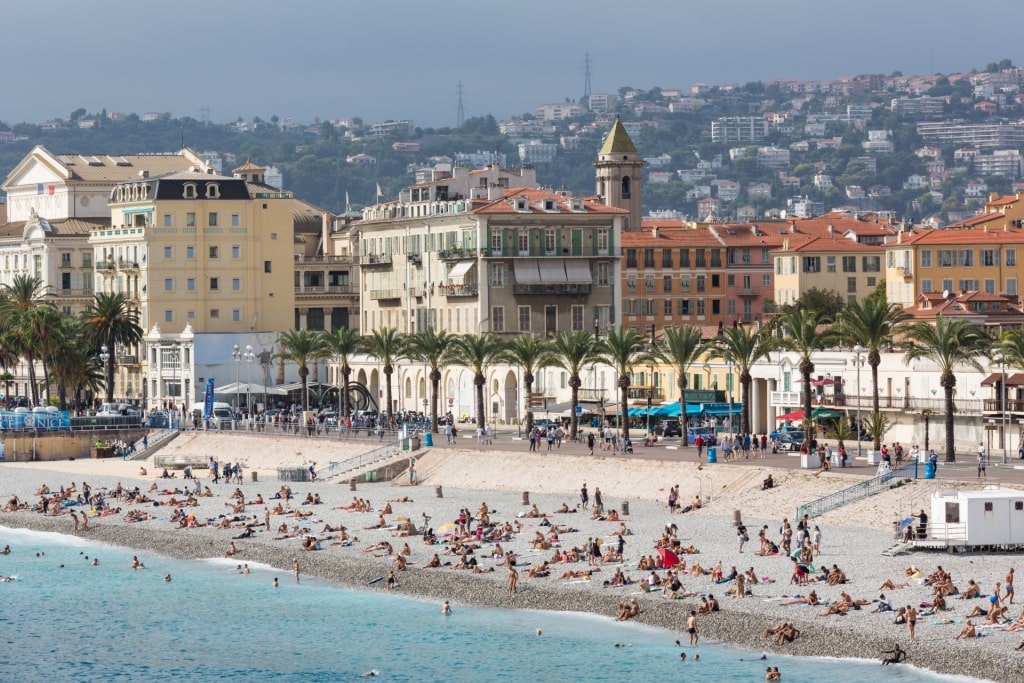
Beach in Nice
Peak season in the south of France is August. This month is when France goes on its “grandes vacances”. Factories and workplaces shut down, schools are on summer break, and everybody heads to the coast. Everywhere is busier during August—but the sun is shining and the country is in a happy vacation mood.
The best time to go to the south of France to see those gorgeous lavender fields, a haze of fragrant purple, is from the end of June to the middle of August. July is high season for lavender, with flowers in peak bloom.
Peak season for sunflowers, on the other hand, if you want to channel your inner Van Gogh and do some painting, is slightly earlier, from mid-June to late July.
When Is Shoulder Season?
September and October are shoulder season in the south of France, as well as April, May, and early June. These months can still be busy, particularly as more and more visitors are drawn in spring and fall by the prospect of avoiding the summer heat. Many visitors see shoulder season as the best time to visit the south of France.
You should, however, still find plenty of space on the beach, if a beach day beckons, and multiple opportunities to sit with a coffee or a crisp salade niçoise in an al-fresco café.
When Is Low Season?
Low season in the south of France is winter, particularly January and February. There is a peak of activity at Christmas, of course, and again in February, when Nice celebrates Carnival with great panache, but otherwise, this is the quietest time to visit. Some beach restaurants may close for the winter while the owners take a break.
Read: Best Places to Visit in the South of France
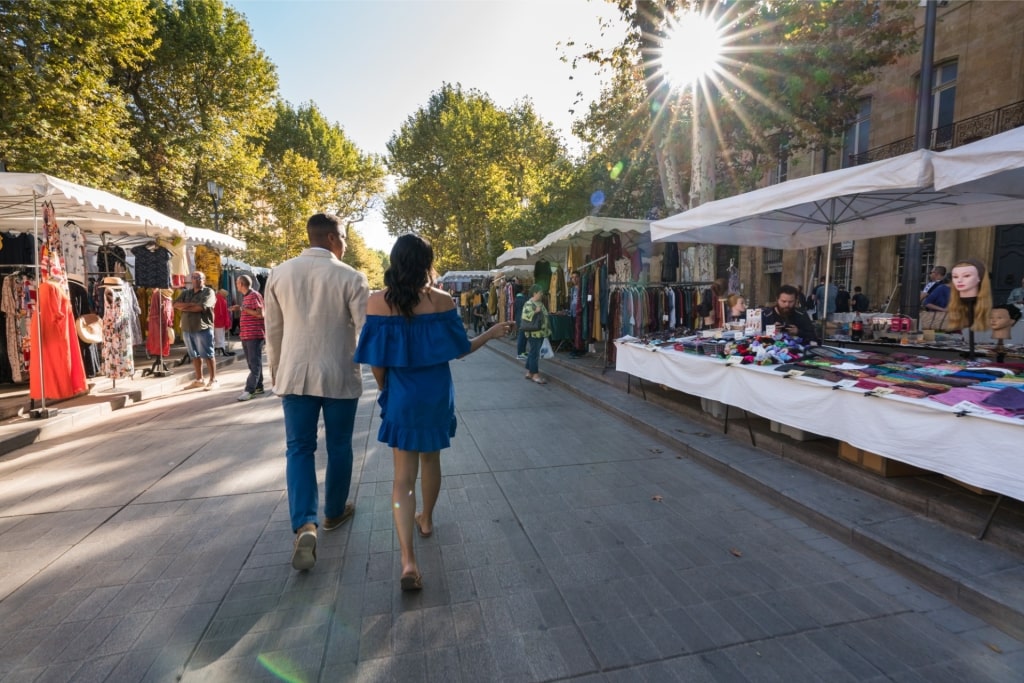
Aix-en-Provence
Discover the beauty of the south of France on one of Celebrity’s unforgettable cruises to France.
